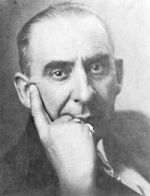When, thanks to appropriate dosage and rules, we cure a serious diphtheria with an infinitesimal dilution of a remedy capable of provoking a false membrane, when we stop convulsions in a few seconds with Belladonna, which can provoke them, when we produce a refreshing and prolonged sleep with Coffea, of which we know perfectly well the exciting and insomnious action, when we see a radical paralysis cured in a very short time with minimum doses of plumbum which everybody knows perfectly capable of producing an identical morbid trouble, then surely our eyes are opened. We begin only then to render an account to our stupid ignorance, of the dangerous ignorance, of the reprehensible and guilty ignorance.
Later, having become homoeopaths, two roads offer themselves immediately to us when we face a difficult case.
First there is the road of laziness, the one of the least, effort, which makes us give, without waiting all the useful reaction, a series of various remedies in different dilutions. If the result is not satisfactory, we sink in the mixture, hoping in this way to obtain a rapid effect, and we fall again into this fallacious thought that a mixture of remedies will direct each of its component parts towards the organ to which we direct it, exactly, as we were doing formerly in our magisterial allopathic prescription. The result does not wait to show us our error. Certainly, by this means, we can often modify the symptoms, sometimes even cure them, but we also camouflage them, we displace them and provoke a real metastasis. Thus another trouble appears, giving us the illusion that the former was cured. It is the bad method, the beginners method. We lose our head, we are not sure what we are doing because we do not know enough. We have all passed through this first stage, fruit of traditional medical education, but however, the effects thus obtained were far more superior to those of the old school.
But there is a second road, it is the one which leads to true success. It consists of plunging oneself into the study, by following scrupulously, carefully and exactly what the founder has, taught us. It does not matter how long and difficult this study may be, it will render us a master of our art and enable us to comprehend the error which has been committed. The result obtained with the unique remedy, in minimal dose, selected strictly according to the Hahnemannian principles and rewards us largely for our labour. It is why allopathies study homoeopathy.
Homoeopathy, investigate very thoroughly the incredible richness of the teachings of the founder, Samuel Hahnemann, and never forget in each unsuccess, in each failure, in each defeat:.
“When we are dealing with a science which is concerned with the saving of life, it is a crime to neglect its study.”.
GENEVA, SWITZERLAND.

